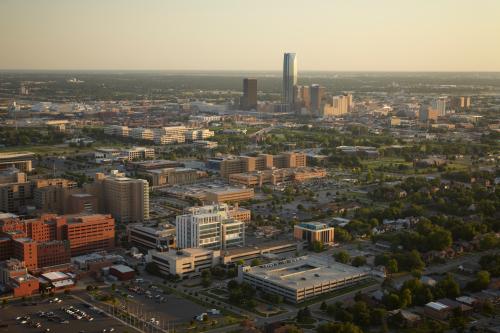Over the past two decades, a confluence of changing market demands and demographic preferences have led to a revaluation of urban places—and a corresponding shift in the geography of innovation. This trend has resulted in a clustering of firms, intermediaries, and workers—often near universities, medical centers, or other anchors—in dense innovation districts. Local economic development leaders are now exploring ways to support this evolution as a means of fostering job creation, economic opportunity, and revitalization in their communities.
In “Assessing your innovation district: A how to guide,” we provide guidance for how public, private, and institutional leaders stakeholders can undertake the first key step in that process: assessing their innovation ecosystem. Such an “audit” provides critical intelligence on an area’s strengths, weaknesses, and opportunities, which can inform a unified vision, a clear set of goals, and customized strategies for reaching them.
Developed with our colleagues at Brookings, Project for Public Spaces, and Mass Economics, and road tested through on-the-ground work in Philadelphia, Pittsburgh, and Oklahoma City, the guide lays out a framework to help leaders identify an area or areas in their region with strong potential for innovative growth and development and/or evaluate an area already recognized as an emerging innovation district. The guide is centered around five big questions local “auditors” need to explore:
1) Where are your region’s highest concentrations of innovation assets?
Companies today need to be able to interact with researchers, inventors, and entrepreneurs, as well as with other firms, to define new products and identify new markets. Density and proximity are paramount in facilitating this type of interaction. Local leaders therefore need to look across their urban landscape to determine what area or areas have a critical mass of well-connected innovation assets from which a district can grow and develop.
2) Is the district leveraging and aligning its distinctive advantages to grow and strengthen firms’ innovation capacity?
Successful innovation districts have the collective ability to translate ideas into new products and services that improve the quality of life in their city and region, and, potentially, have a positive impact on people and places across the globe. This can take many forms and originate from several types of institutions—from research hospitals to engineering schools to technology startups, among others. To assess a district’s innovation capacity, local leaders need to understand their innovation ecosystem’s inputs (e.g. research strengths), outputs (e.g. start up activity), and levels of connectivity among actors and assets.
3) Does the district have an inclusive, diverse, and opportunity-rich environment?
A healthy innovation district comprises a diversity of people and provides economic opportunity for workers with a range of skills and education levels. And many emerging districts are within or adjacent to areas of economic distress, offering the opportunity to meaningfully engage nearby residents in district growth. But this won’t happen by accident: Leaders must assess existing measures of diversity and inclusion and develop intentional strategies to ensure that all residents have a chance to benefit from, and are an integral part of, district development.
4) Does the district have physical and social assets that attract a diversity of firms and people, increase interactions, and accelerate innovation outcomes?
Dense, walkable, and highly connected areas help nurture the increasingly collaborative and open culture of innovation. These places include the kinds of spaces, in both the public and private realms, that bring a diversity of firms, institutions, and workers together in both formal and informal ways; that grow and strengthen social networks; and that offer the kind of vibrant environments where people want to spend time. In short, stakeholders should recognize (and thus evaluate) quality of place—connectivity, proximity, and the presence of dynamic, inclusive spaces—as central to a district’s economic proposition.
5) Does the district have the leadership necessary to succeed?
Regardless of their economic, physical, or human capital strengths, burgeoning innovation districts will not reach their full potential without capable leadership. District leaders can play a variety of roles in fostering a new culture of collaboration and collective impact, whether by serving as champions of a district vision, conveners that mobilize stakeholders to engage, or catalysts of action. While leadership structures will vary, districts can’t succeed unless leaders of key organizations—anchor research institutions, nonprofits, intermediaries, and/or private firms—make a shared, sustained commitment to drive change.
While the starting points for different districts will vary, knowing the right questions—and tailoring them to the local context and capacities—will help district leaders conduct an analysis most appropriate for their individual needs. Indeed, no two places will use this guide the same way, and we expect that the process itself will evolve over time to consider new measures, and be undertaken in novel and innovative ways by new groups of stakeholders working within districts and across them. As they do, communities will hopefully learn from each other in a virtuous feedback loop that gets sharper and more effective at every turn.


![An aerial view of the Philadelphia innovation district [photo credit: SHoP Architects/West 8]](https://www.brookings.edu/wp-content/uploads/2017/05/philadelphia_idreport_webbanner001.jpg?quality=75&w=500)





Commentary
Assessing your innovation district: Five key questions to explore
February 21, 2018